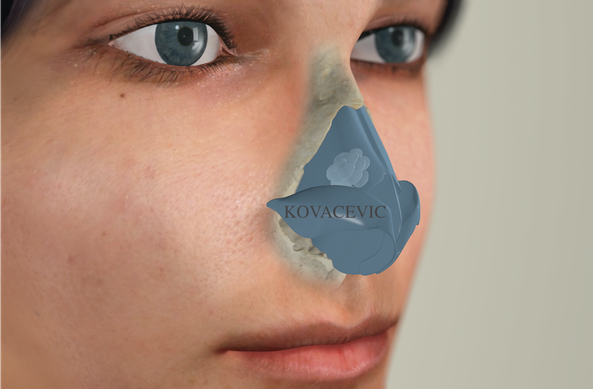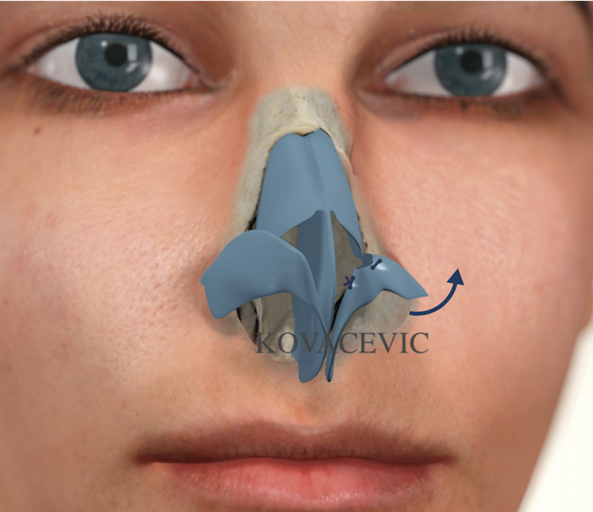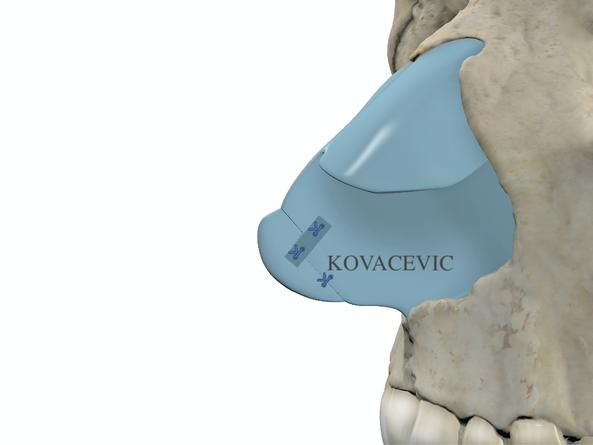Cartilage reconstruction during nasal surgery
In the cases where the natural nasal bridge cannot be preserved due to a pronounced asymmetry, part of the cartilaginous nose must be removed and reconstructed subsequently.
The reconstruction is performed either with folded triangular cartilage (spreader flaps) or with small cartilaginous "rods" (spreader grafts) implanted in such a way that they reconstitute a natural-looking nasal bridge.
Special techniques
In order to even out the smallest irregularities and unevenness, the finest cartilage scales are carved afterwards and inserted in a targeted manner in the appropriate places. The body's own blood glue, which is obtained during the operation by means of the very latest technology, fixes these scales in place. The result is a gentle nasal bridge line with a clearly defined profile.
This technique can also be employed to correct results after unsuccessful previous surgery and skin unevenness and, if necessary, to correct scars under the skin.
Cartilage scales transplantation
The nose tip is most frequently modeled by removing a small, excess part of the so-called wing cartilage and then forming the nose tip into the desired shape by using sutures.
The shape of the tip should be reminiscent of a diamond and in the appropriate proportion to the nasal bridge and the face.

Nose tip suture
It is very important to emphasize that the tip of the nose can droop after surgery, so stabilization has to be provided by means of a cartilaginous graft derived from the patient's own cartilage, most likely from the nasal septum.

Stair Step Septal Extension Graft
It forms a very stable structure in the area of the tip of the nasal septum, thus preventing the nose tip from dropping.

